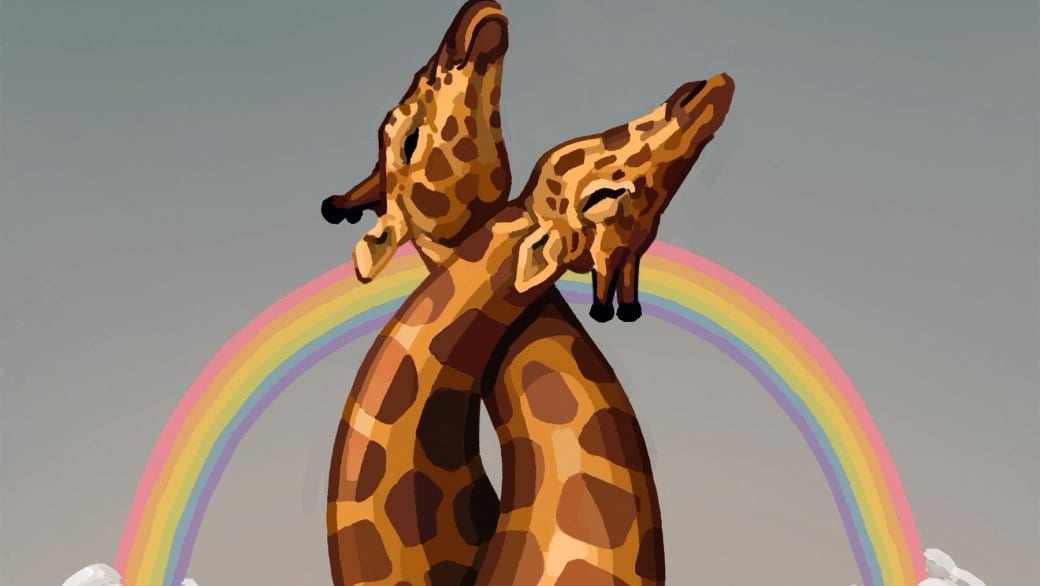Animals have sex — every once in a while it’s even for reproduction. Take, for example, the Jamaican giant anole, a 30-centimetre-long lizard. Larger males will form territories that they lord over where smaller males will also live. Either because the smaller males are mistaken for females, or because the larger male anoles are looking for a little bit of action, the larger males will mount the smaller males. Biologist RL Trivers wrote that “occasional buggery might be a small price to pay for the advantages of remaining within the large male’s territory,” because living with a dominant male could mean better food, or sneaking some mating with one of the dom’s live-in females.
Before we get to the history, we’ll take a detour through some biology. Let’s begin with a scientifically proven fact: animals are gay. Like really, really gay. Anyone who claims that homosexual behaviour is something invented by humans is made patently ridiculous by the unbridled amount of gay sex animals everywhere are likely having at this very moment.
Homosexuality among lower orders of animals usually mimics the heterosexual variety: to establish dominance, or due to sexual arousal in mating situations, or simply a lack of sexual outlets. But preference is also a factor. Many bird species form homosexual pairing bonds for long periods of time. One study of western seagulls found that up to 14 percent of the population was made up of same-sex female couples nesting together. Something to think about next time you’re at the beach.
Among mammals, things get really interesting. Mountain sheep are predominantly homosexual, to the point that female sheep mimic the behaviour of sexually attractive males to attract mates. Younger male giraffes engage in affectionate courtships together: appropriately called “necking,” they stand beside each other and rub their necks together, starting at the head and working their way down to more exciting regions. This foreplay often leads to full on intercourse between the amorous animals.
The more intelligent the animal, the more elaborate and, arguably, loving their love-making is. Many sea-mammals have been observed to engage in relationships that are certainly sexual, but also border on emotional. Play and affection are part and parcel with same-sex sexual relationships of bottlenose dolphins — many couples form bonds for life, and they also have a predilection for same-sex group activities as well.
But the homosexual behaviour among monkeys and apes is when it really begins to look like human homosexuality.

This shouldn’t be too surprising — bonobos share more than 98 percent of their genetic makeup with us. Like humans, female bonobos aren’t limited to their estrous cycle for sexual receptivity. Among both males and females, sex plays a primary role in peaceful living: when a situation that would normally inspire fighting is encountered, bonobos will engage in sex and then peacefully resolve the issue. They form partnerships in any imaginable sexual combination, engaging in any available type of sex, including oral sex, mutual masturbation and tongue kissing — just like humans.
Bonobos have several traits that have led some scientists to propose them as a proto-ancestor, comparable to those that evolved into chimpanzees and humans millions of years ago. One interesting trait is their upright walking, which draws comparisons to the first genus of hominid that would become the first Homo, Australopithecus. This genus of hominids developed in what is now eastern Africa around four million years ago, before some of the population eventually evolved into the Homo genus, of which we Homo sapiens are a part of. The rest went extinct about two million years ago.
This is a roundabout way of saying that, if homosexuality exists in abundance in the species that closely resembles what we’ve evolved from, it’s likely that homosexuality existed in the precursors of humanity, long before language or civilization came into play. Sex has always been used for more than just reproduction to so many species. We Homos have always known that pleasure and relationships mean just as much as making babies.
History Boys appears on Daily Xtra on the first and third Tuesday of every month. You can also follow them on Facebook.
(Illustration: Yigi Chang/Daily Xtra)


 Why you can trust Xtra
Why you can trust Xtra


